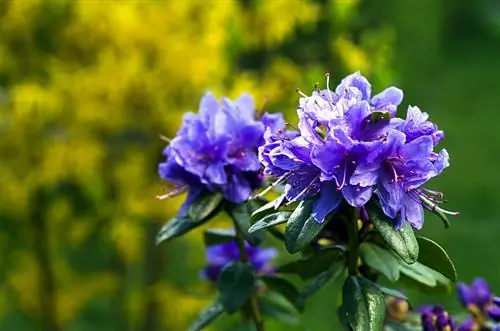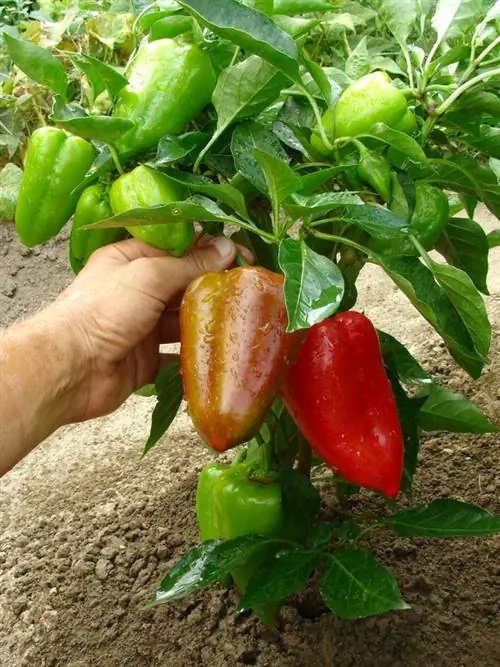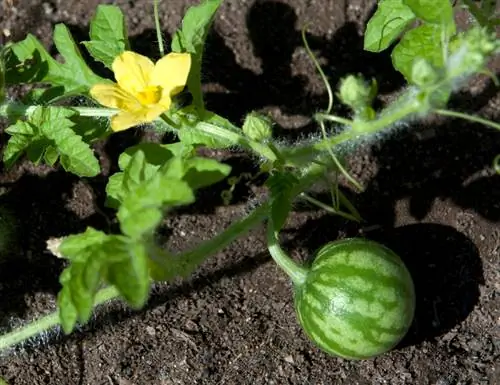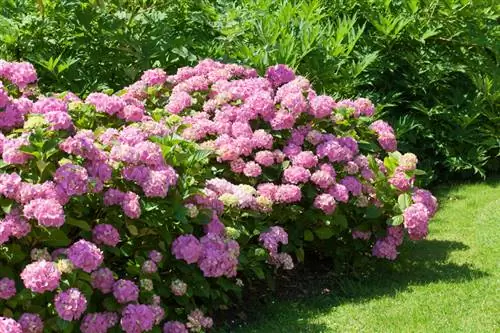- Author admin [email protected].
- Public 2023-12-16 16:46.
- Last modified 2025-01-23 11:20.
They enchant with flowers that are similar to those of orchids and enchant with their wonderful scent: the sweet peas (lat. Vicia). We have summarized for you in this article how you have to plant the garden beauties so that they thrive.

How and when should you plant sweet peas in the garden?
Vetches should be planted after the ice saints, in moderately sunny to partially shaded locations with trellises. The soil should be humus, slightly calcareous and permeable. A planting distance of 10 cm is recommended. They can be sown directly outdoors or started indoors.
Planting time
Despite the fact that sweet peas can cope well with the last night frosts of spring, it is recommended that you only sow the plants outdoors after the Ice Saints. Even sweet peas that have been grown indoors should only then be moved to the bed.
The Location
Veches love moderately sunny to partially shaded locations. The acrobatic climbers want to reach high, so give the sweet peas a place where they can climb undisturbed. A higher fence or trellis is ideal. A place protected from the wind is also recommended so that the shoots are not snapped by stormy breezes.
The Soil Claims
Vicia prefers humus-rich and slightly calcareous soils that should be well-drained.
The planting distance
You can plant sweet peas quite closely. A planting distance of ten centimeters is sufficient.
Sowing sweet peas
You can sow the fragrant climbing plants directly outdoors in mild regions from April onwards. In order for the seeds to sprout well, it is important that the vetches have enough nutrients. For this reason, enrich the soil with mature compost in advance.
Moving forward in the house
From March you can grow small vetch plants on the windowsill. Soak the seeds in lukewarm water overnight. Vicia is a dark germinator, so the seeds are planted about five centimeters deep in potting soil (€6.00 on Amazon). They germinate quickly in a place that is not too warm and can be moved outdoors from a height of ten centimeters.
Insert
Veches do not like to be pricked out, so make sure to move the small plants into the garden along with the soil clinging to the root ball.
The Multiplication
If you don't remove everything that has faded from the plant in late summer, you can harvest many vetch seeds yourself for next year.
Good and Bad Neighbors
Vetches absorb a lot of nitrogen and therefore harmonize perfectly with all plants that heavily deplete the soil.
Tip
Do not throw away the cut shoots of the dead sweet peas, but use them to pile up the plant. This encourages the formation of additional roots so that the plant can absorb more nutrients. This causes the vetch to produce more flowers.






